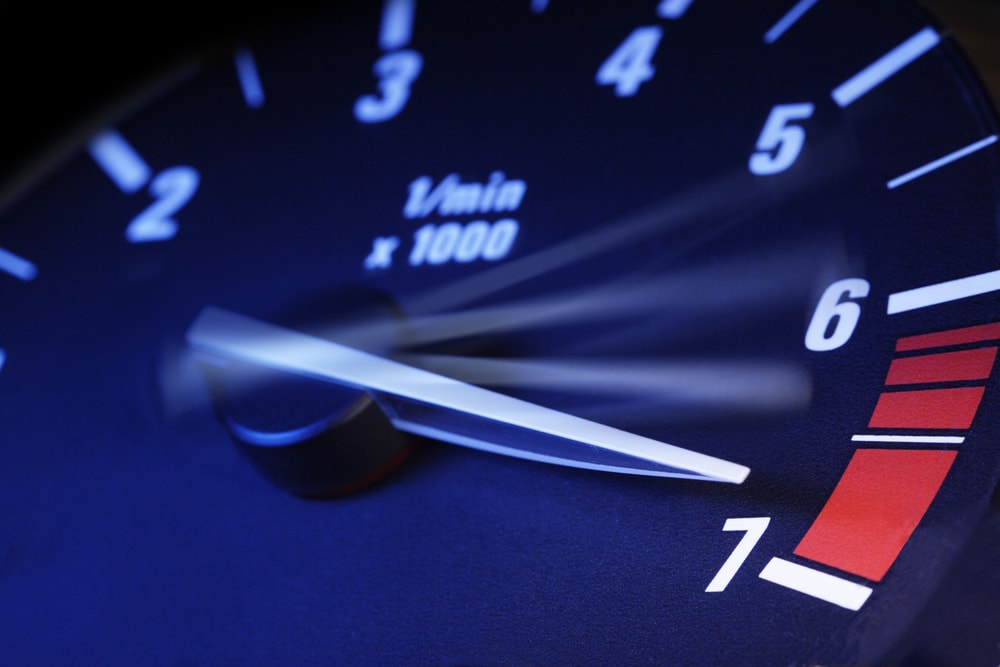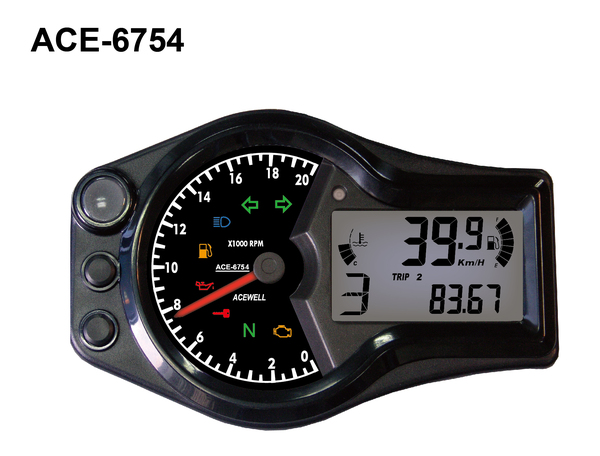The Value of a Tachometer in Monitoring Engine Speed and Efficiency in Automotive Applications
In the realm of automobile engineering, the tachometer stands as a crucial tool in the motorist's arsenal, offering a direct window right into the inner workings of a vehicle's engine. Past its feature as a plain scale of transformations per minute (RPM), the tachometer offers as a vital device for fanatics and experts alike, supplying real-time insights right into engine performance and health and wellness. Recognizing the relevance of this tool surpasses surface-level observations, diving into the intricate partnership between engine speed, power outcome, and total driving experience. As we check out the complex duty of the tachometer in auto applications, a much deeper appreciation for its effect on vehicle dynamics and performance begins to emerge.
Importance of Checking Engine RPM
Checking engine RPM, or transformations per minute, is a vital element of auto upkeep and performance evaluation. Engine RPM directly associates with the speed at which the engine's crankshaft revolves, indicating just how swiftly the engine is running - tachometer. By monitoring RPM, auto mechanics can analyze the wellness of the engine, spot possible concerns, and fine-tune efficiency. An uncommon RPM analysis might signal issues such as engine misfires, damaged ignition system, or concerns with the gas shipment system. Regularly high RPM readings can show hostile driving routines or the demand for a greater equipment shift to boost gas effectiveness.
In addition, keeping track of engine RPM is necessary for efficiency evaluation in auto racing and high-performance automobiles. Keeping ideal RPM degrees is critical for attaining peak power outcome and acceleration. Racers frequently make use of tachometers to ensure they are running within the optimal RPM range for maximum performance. In summary, monitoring engine RPM is not only vital for detecting problems but also for optimizing engine performance in different automobile applications.

Benefits of Real-Time Data
In vehicle applications, real-time data plays an important role in offering instantaneous insights right into the performance and problem of the automobile. By constantly monitoring numerous criteria such as engine rate, temperature level, gas consumption, and a lot more, real-time data supplies countless benefits that add to improved effectiveness and safety and security when driving.
Furthermore, real-time information assists in performance optimization by offering immediate responses on driving routines and engine efficiency. Chauffeurs can change their habits in real-time based on this info to accomplish much better fuel economic situation and extend the life-span of their automobile.

In addition, real-time information plays a crucial duty in contemporary automotive diagnostics, enabling technicians to quickly diagnose and attend to malfunctions. This leads to reduced downtime, reduced upkeep expenses, and ultimately, boosted general lorry integrity and durability (tachometer). By taking advantage of the power of real-time data, auto stakeholders can make educated decisions that favorably affect both the efficiency and long life of the lorry
Influence On Equipment Shifts
The tachometer plays a crucial duty in maximizing equipment changes by offering real-time engine rate data to the vehicle driver. When approaching the redline on the tachometer, it indicates the chauffeur to upshift to prevent over-revving the engine and triggering prospective damages.
Furthermore, the tachometer aids in achieving smoother gear shifts, particularly in hands-on transmissions. By checking engine rate, chauffeurs can perform equipment changes at the optimal RPM variety, decreasing snagging motions and lessening wear on the transmission elements. This precision in gear changes not only improves driving comfort yet additionally adds to sustain effectiveness.
Enhancing Gas Performance
Provided the crucial duty the tachometer plays in maximizing equipment changes for performance additional hints and engine health, it straight adds to optimizing fuel efficiency in vehicle applications. By giving real-time comments on engine speed, the tachometer assists drivers in maintaining one of the most effective RPM array for gas economy. When chauffeurs continually check the tachometer and change their driving practices appropriately, they can avoid unnecessary gas consumption triggered by over-revving or hauling the engine.
In addition, the tachometer assists chauffeurs determine one of the most fuel-efficient gear to be in at any type of provided minute, preventing the engine from working more challenging than necessary. This is particularly crucial during acceleration Visit Your URL and travelling, where remaining in the appropriate equipment can substantially impact gas efficiency. Additionally, the tachometer can signal vehicle drivers to prospective mechanical issues that could be adversely impacting fuel economy, such as a slipping clutch or a stopped up air filter. In conclusion, the tachometer works as a valuable tool in boosting fuel performance by advertising ideal driving practices and determining locations for enhancement in the car's performance.

Maximizing Engine Durability
The tachometer's duty in checking engine speed and efficiency is crucial in guaranteeing the longevity of vehicle engines. Monitoring the tachometer permits chauffeurs to remain within the recommended RPM array for their lorry, stopping unnecessary pressure on the engine and extending its life expectancy.

Conclusion
Finally, the tachometer plays an essential role in keeping an eye on engine rate and performance in automotive applications. By providing real-time data on RPM, it permits reliable gear shifts, boosted fuel effectiveness, and maximized engine durability. This tool is see here now necessary for preserving optimum engine performance and making sure the general functionality of a car.